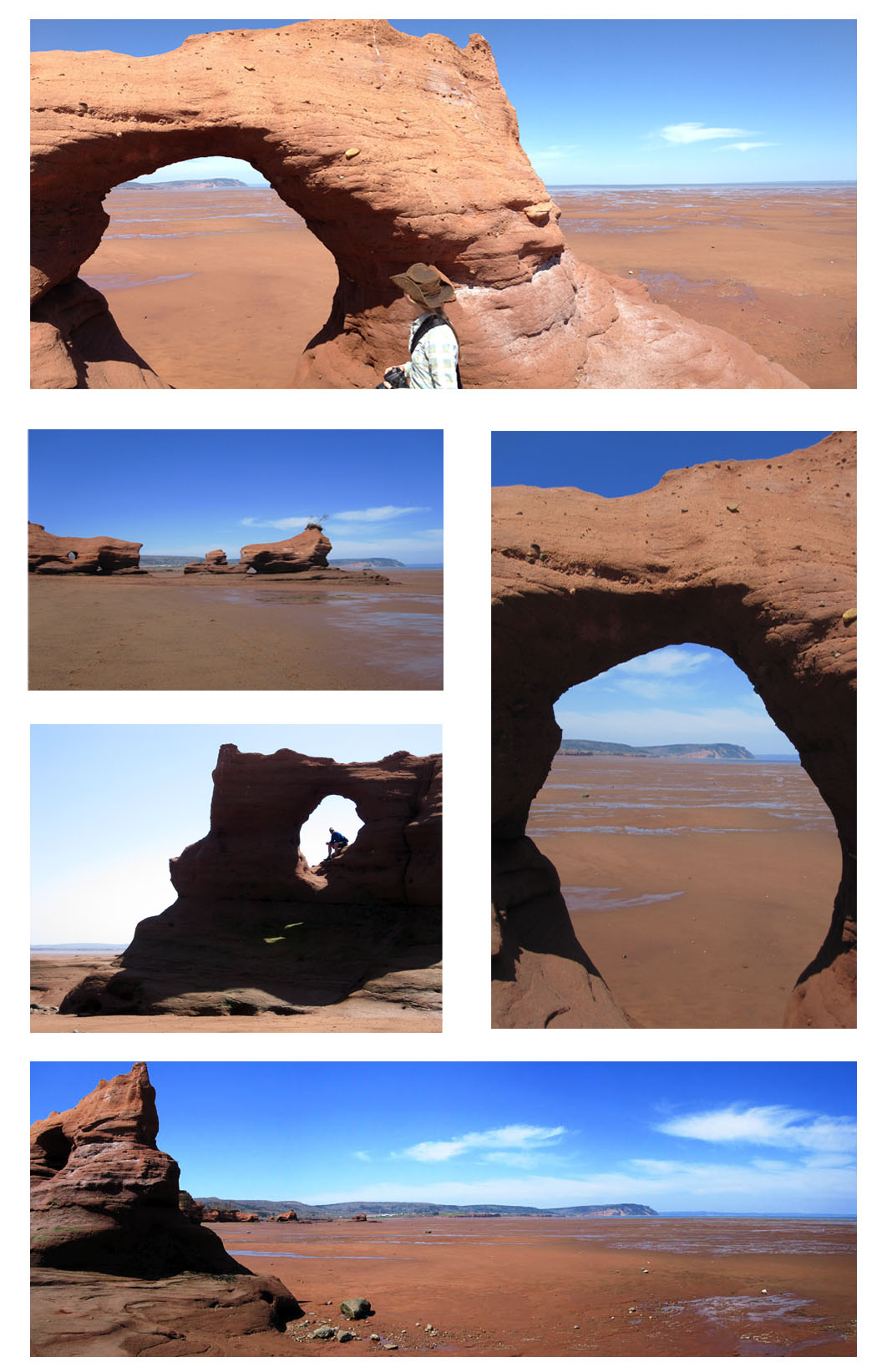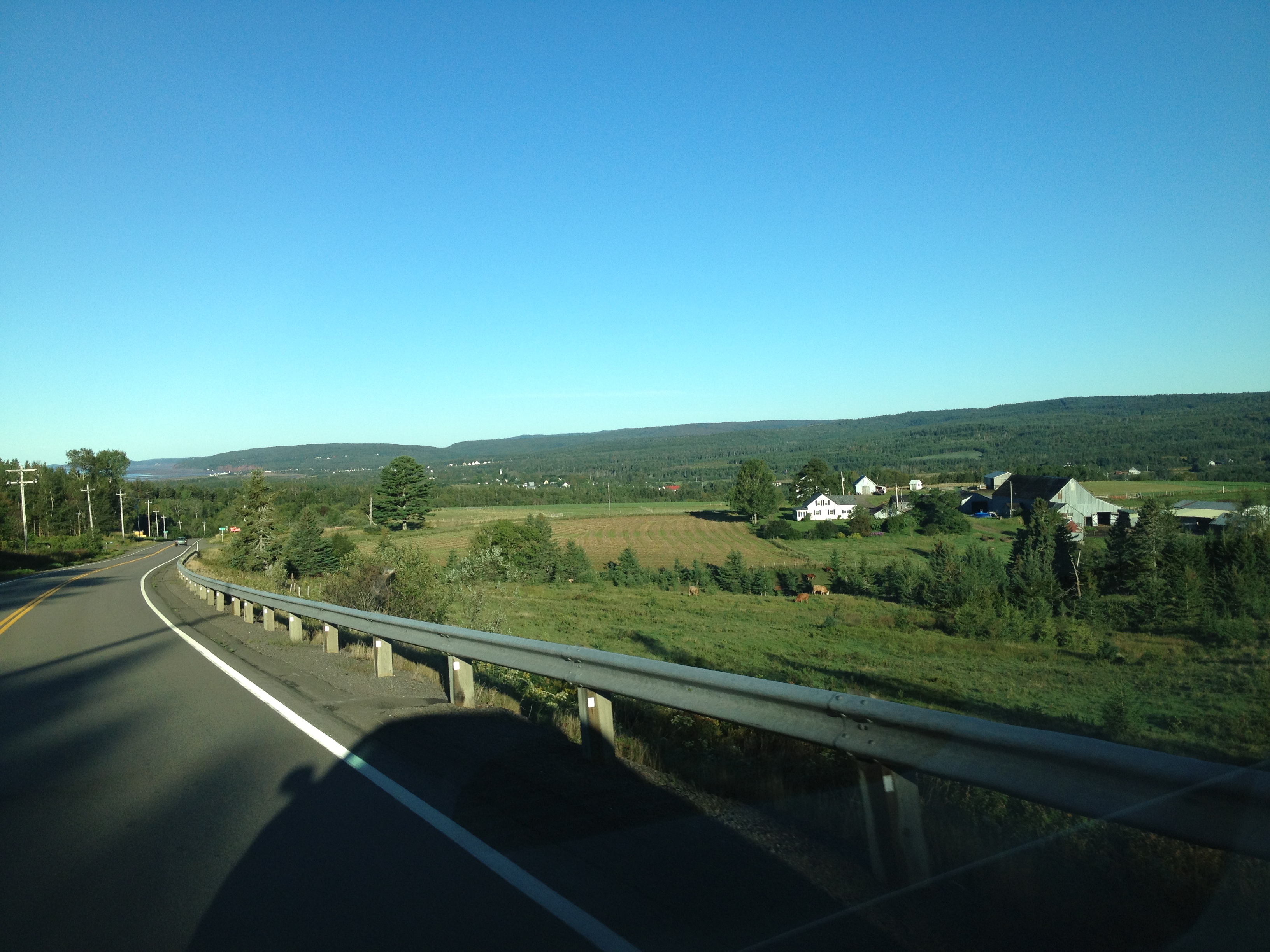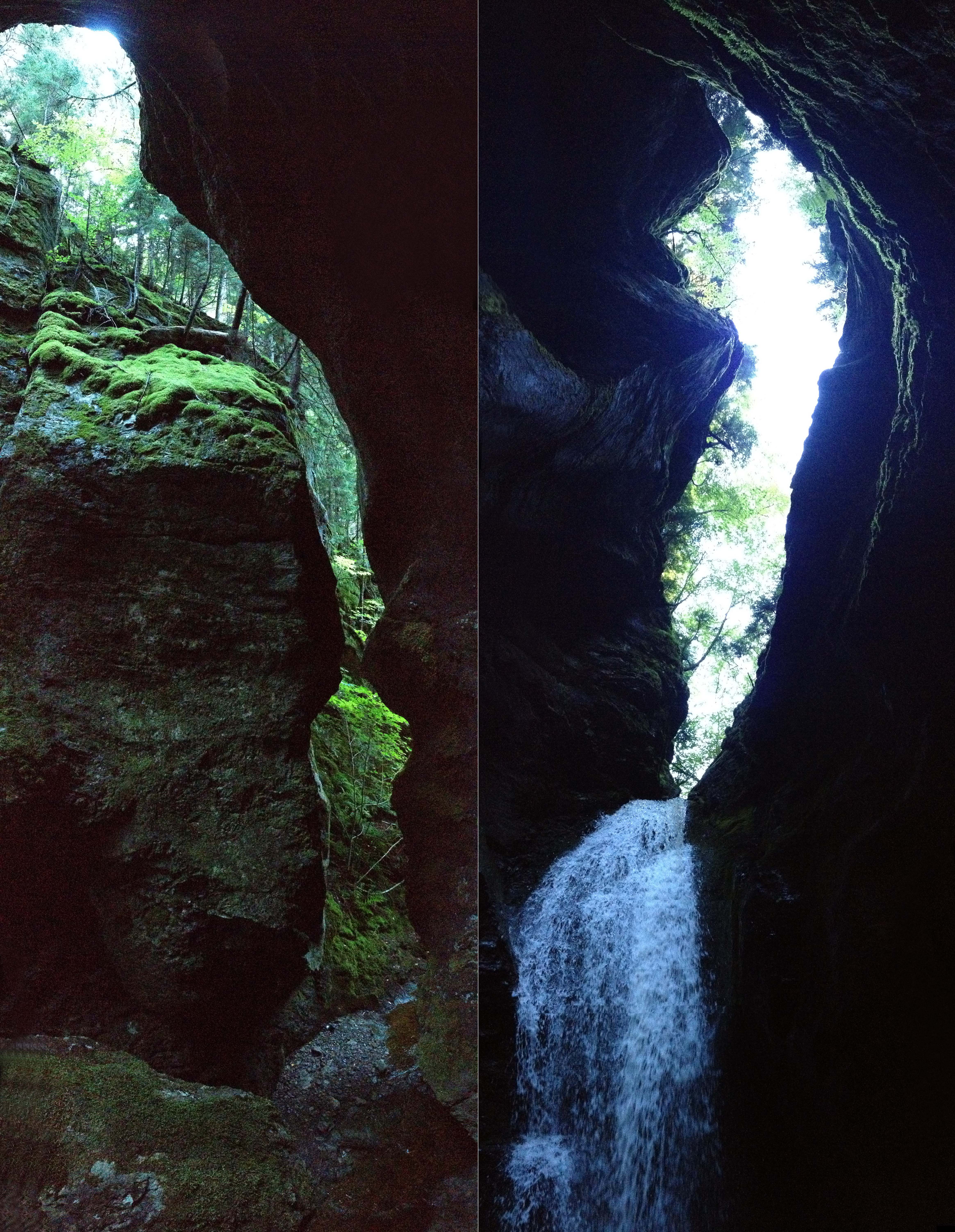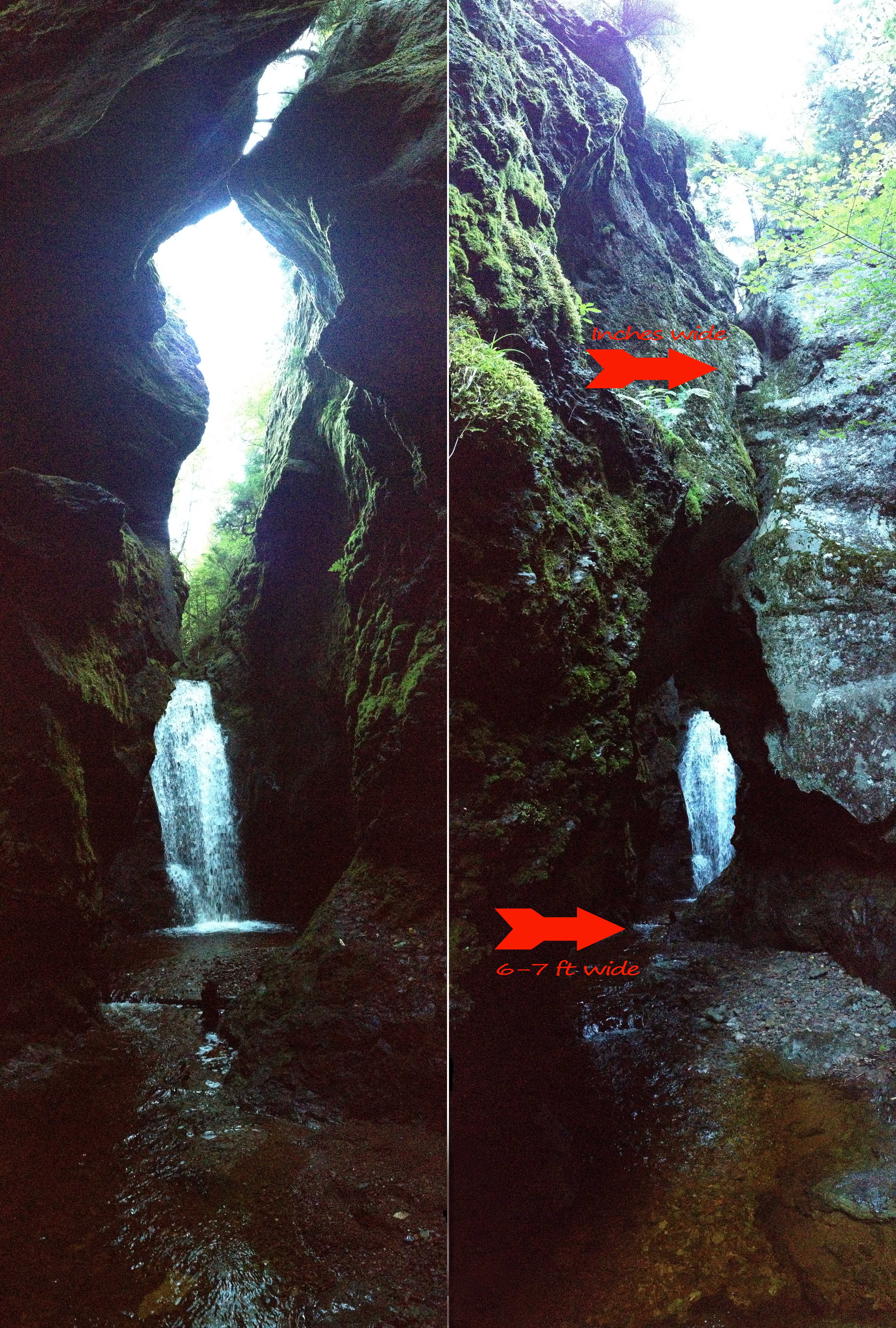Slot Canyoning, Nova Scotia – Where are we again?
What draws people to the American Southwest? My guess is the unique geography and stunning rock formations found in places like Utah and Arizona. Water has played a key role in sculpting tight passages and narrow canyons which are better known as “slot canyons.” Many of these canyons measuring only a few metres across while the walls may reach over 30-40 metres in height and many with open ceilings, allowing beams of light to enter and bounce off the red sandstone rock, creating photographic opportunities at nearly every bend.

It’s pretty safe to say that Nova Scotia is nothing like the blistering sun drenched states of Utah and Arizona. But hold that thought, oddly enough we do share many common traits even though being located on the opposite side of the continent. We to have similar rock in the form of the red sandstone found along the Bay of Fundy, most notably on the shores of the Minas Basin. Also many of our landscapes have been transformed by the handy work of water, leaving behind interesting rock arches, deep valleys and you may have guessed it by now – Slot Canyons.
Though the slot canyons found in Nova Scotia are relatively small compared to their counterparts in the states, they do capture the beauty of these outstanding formations and are another great example of the diversity in Nova Scotia’s varied landscapes. Throughout my many years of exploration in the province I have stumbled upon numerous caves and well hidden valleys, never a slot canyon. I was more then excited to experience this natural phenomenon, having thought I had to cross to the other side of North America to witness such a place.
My friend Ben – Biologist and avid explorer would lead the way. Much like myself, Ben spends a great deal of his free time in the outdoors exploring and discovering lesser known treasures in the back country. We would travel nearly 3 hours from Halifax, up before the sun rose to make the most of the day. Cruising down the highway the morning dew hung gracefully over the many passing lakes, grey as slate rock and eventually taking new form of the changing colors with reflections of the rising sun.

The Cobequid Hills coming into view, making for a scenic drive.
The drive went by in a flash as the Bay of Fundy provided ever pleasing scenery – cows, horse and goats grazed the open fields of farmlands on our way to the Cobequid Mountains, a small mountain range (really just hills) that on average reach 1000ft (305 metres). These hills are an extension of the Appalachian Mountains and at one time would have been true mountains in both height and appearance, many million years of erosion would wear anyone down.
A old logging road brought us to the crest of one of these hills where our trek would begin. The view stretched out over an open field and back towards the Bay of Fundy and the backside of one of it’s most recognized features – Cape Split. Appearing like a giant snake slithering it’s way through the bay and the world’s highest tides – simply put – bad-ass.

Cape Split and Cape Blomidon reaching far out into the bay.
Across the field and through the forest we would go. Within no time the land beneath our feet suddenly came to a shear drop, it was time to man up and descend the steep terrain to the canyons base. Thanks to some crafty rope work presumably put up by locals, the guide ropes made the descent from tree to tree much more manageable than sliding down feet first.
Meeting the river at the bottom the topography was really getting the blood flowing. Steep vertical walls on either side of us now with a 50 ft waterfall cascading down one of the rock faces from the recent heavy rainfall. We headed up river, the walls got higher and narrower until we reach a 10 ft plunge falls with nowhere to go but up and around the torrent of water. It felt like we were trespassing on a castle, past the water moat and up over the impenetrable walls to discover what lies hidden the intimidating rock that surround us. My heart was now racing and what lie around the corner was nothing short of a visual orgasm.

10 ft waterfall stands guard to the entrance. Up and over we must go.
One last boost up and over the top of the falls and there we stood at the entrance of the slot canyon and the 25 ft waterfall that is responsible for creating this striking geological formation. The entrance and bottom of the canyon measures about 6-7 ft across but near the top it’s literally inches. A closer examination of the rock and you get the impression that mother nature meant business when creating this place.


Parts of this rock are quite jagged while other sections have been carved and smooth by the turbulent rushing waters over hundreds of millions of years and you can easily see the course the water has followed by the shape and curves of the rock walls – fascinating. All it took was a slight crack in the rock where the river would make its course, on route to the Bay of Fundy to start the creation of one of Nova Scotia’s most unique canyons.

Continuing to carve way at the surrounding rock walls.
I kept thinking how much I wanted to have my guitar, the acoustics in the canyon were unreal. The sound of rushing water filled the refreshing air and fueled the senses, while the light of day barely breaking through the crack in the canyon ceiling and entering this deep dark cavern. We climbed about the inner walls of the canyon, with one misstep I slid down the smooth rock face and into the river below, landing on my feet like a cat but soaking my new so-called waterproof boats – I beg to differ. We had a good laugh at my expense and climbed our way out of the canyon, getting a rewarding view of the waterfall from above.

The open ceiling of the canyon just letting in the slightest bit of light.

The Slot Canyon from bottom to ceiling – magnificent.
We decided to continue our adventure with the discovery of some new waterfalls by following maps that Ben had from the 1890′s, I kid you not. We soon found ourselves at the base of a number of beautiful waterfalls and a couple of small caves. Just when you thought you seen it all you come to discover a place which takes you totally by surprise, right in your own backyard. Nova Scotia continues to impress me with every new discovery and just another reason why I am proud to call myself an “East Coast” kid.



[…] in the southwest United States. We even have some in my native province of Nova Scotia. Here is a link to an article on them by my friend and co-author Ryan […]